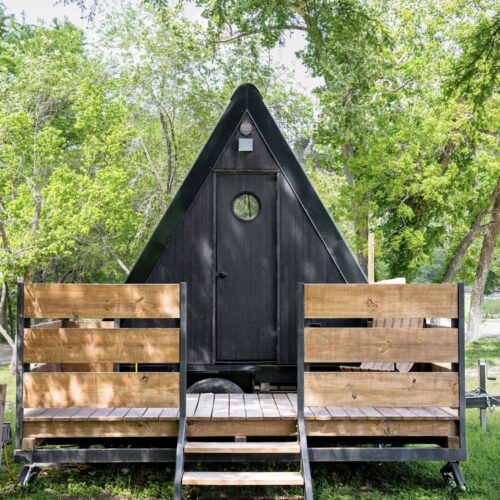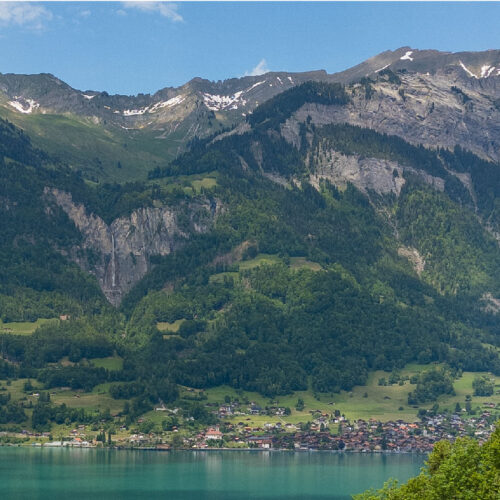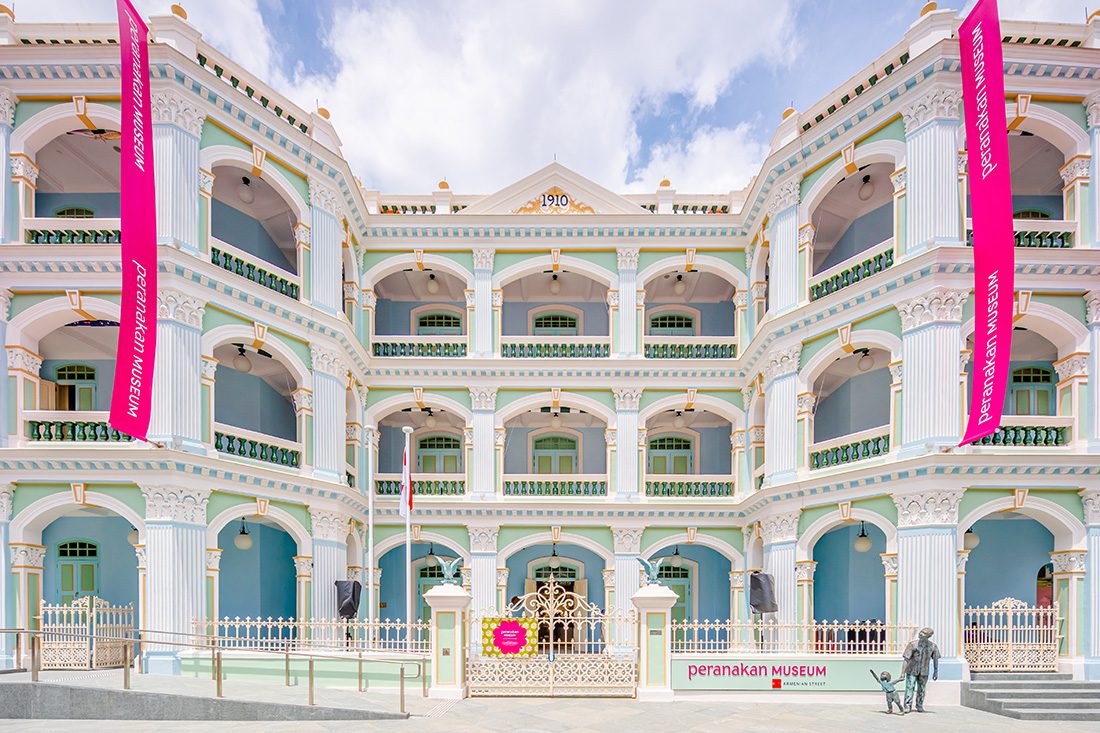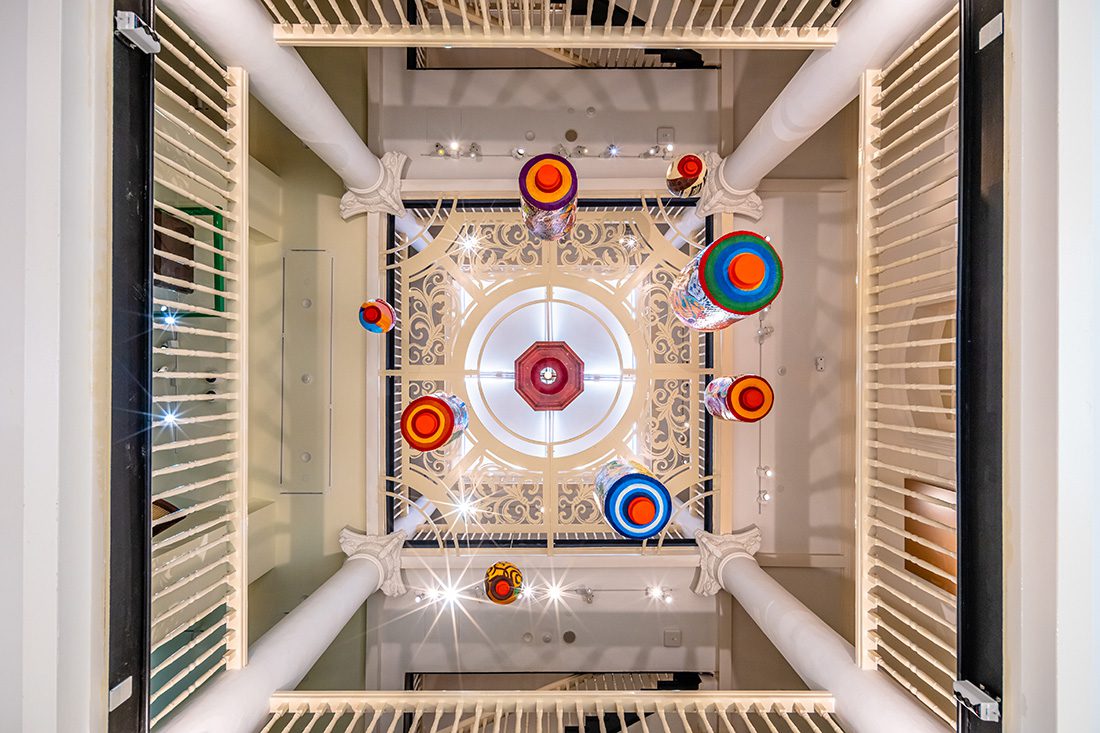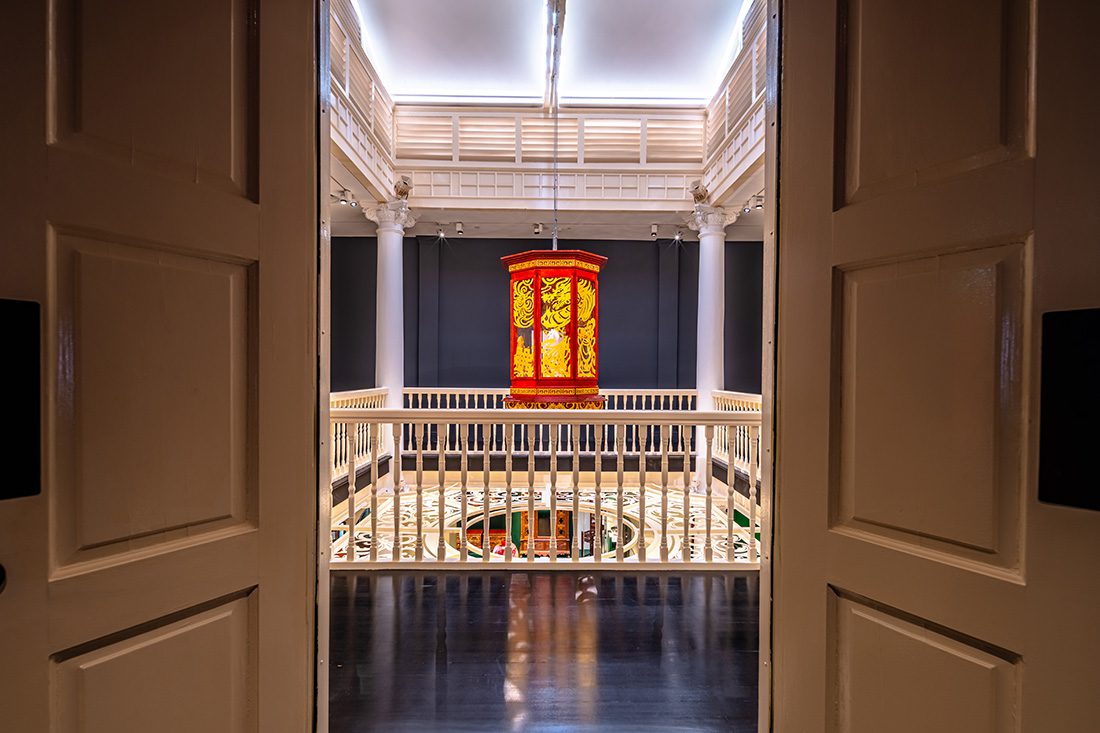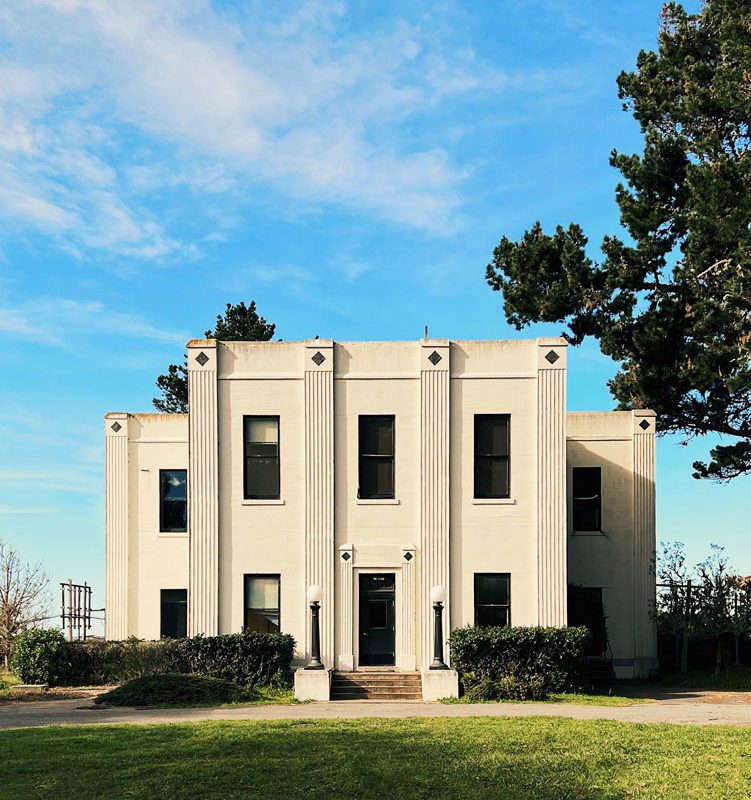These extravagantly painted Singaporian structures are not the result of an art project, or warring neighbors, but rather a reflection of the cultural petri dish and hard-working community that all started with a locally-appointed “king.” Popular culture seems to have chosen the drab colors of black, white, beige, and gray as a means to decorate architectural facade, so when you find yourself on a throughway with row after row of vibrantly decorated domiciles, it’s hard not to crack a smile and wonder why.
These two story shophouses have some coconuts to thank for their current location. At the beginning of the 20th Century, many wealthy individuals were moving away from the crowded city centers to enjoy more space and seaside bungalows in the neighborhood known as Katong that was ripe with coconut plantations. One such individual was Chew Joo Chiat who had left his home country China at 20 and sailed to Singapore with nothing in his pockets, just the hopes of finding a better quality of life. Little did he know, his name would forever be forged into the streets of Katong.
/ 3
Through hard work Joo Chiat found a knack for being a tradesman and soon had enough money to start purchasing land and plantations to grow spices and cultivate coconuts. Soon he owned so much land that he became deemed the “King of Katong” by his neighbors. But Joo Chiat was not known for his greediness, but rather for making frequent contributions to the Community, including offering up a large dirt track of land to be made available for public use. This land would eventually become the famous Joo Chiat Road and even post offices and markets host his name.
New communities soon popped up, and a significant population of Chinese born in British territories – known as Peranakans – made their way to the region. The Peranakans were fans of color and quickly got to work transforming the new thoroughfare into a perfectly painted paradise of rainbow-colored shophouses offering eclectic Peranakan delicacies, crafts, and couture.
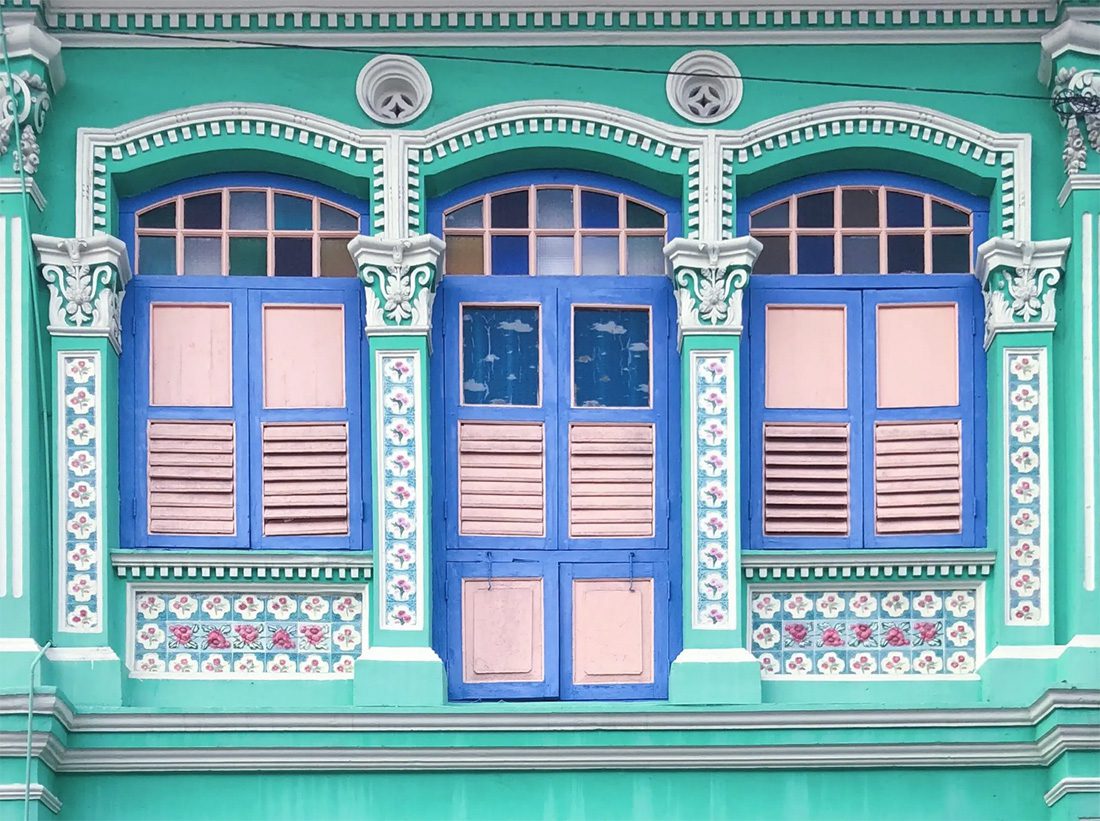
Peranakan Houses 📸 Andre Sheridan
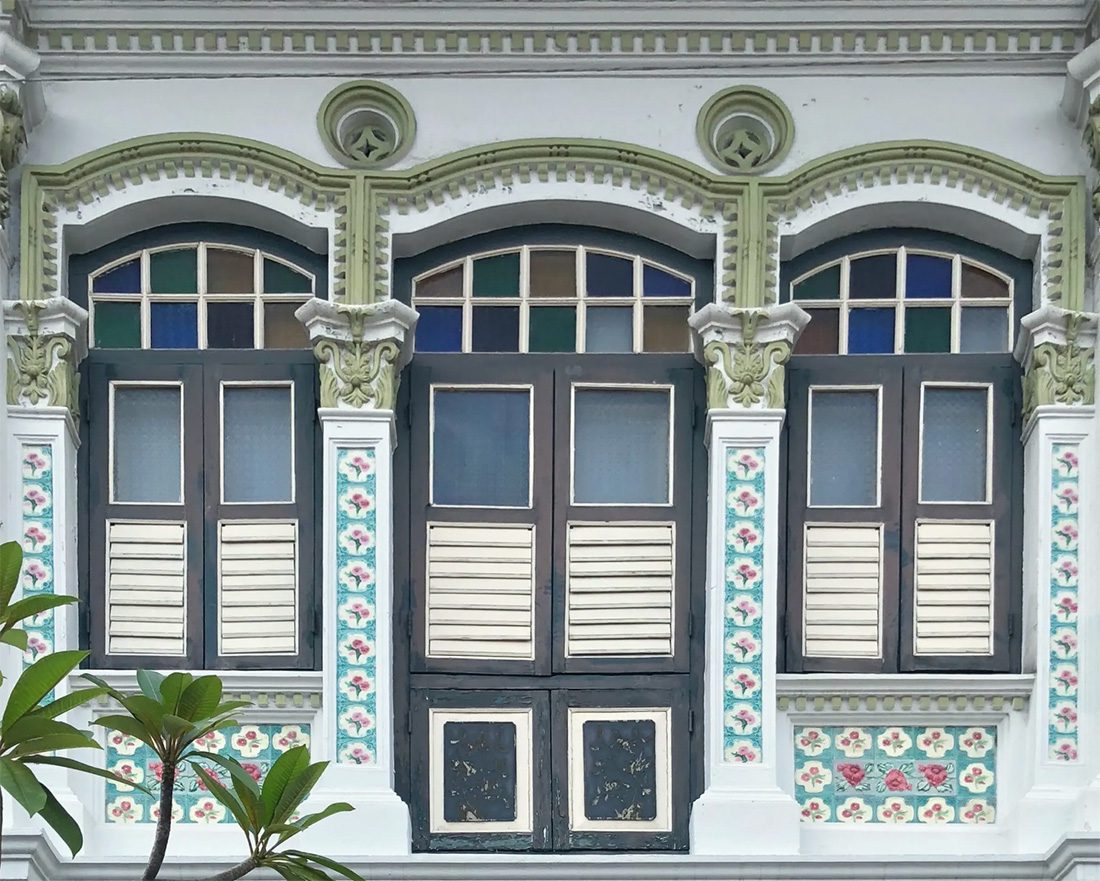
Peranakan Houses 📸 Andre Sheridan
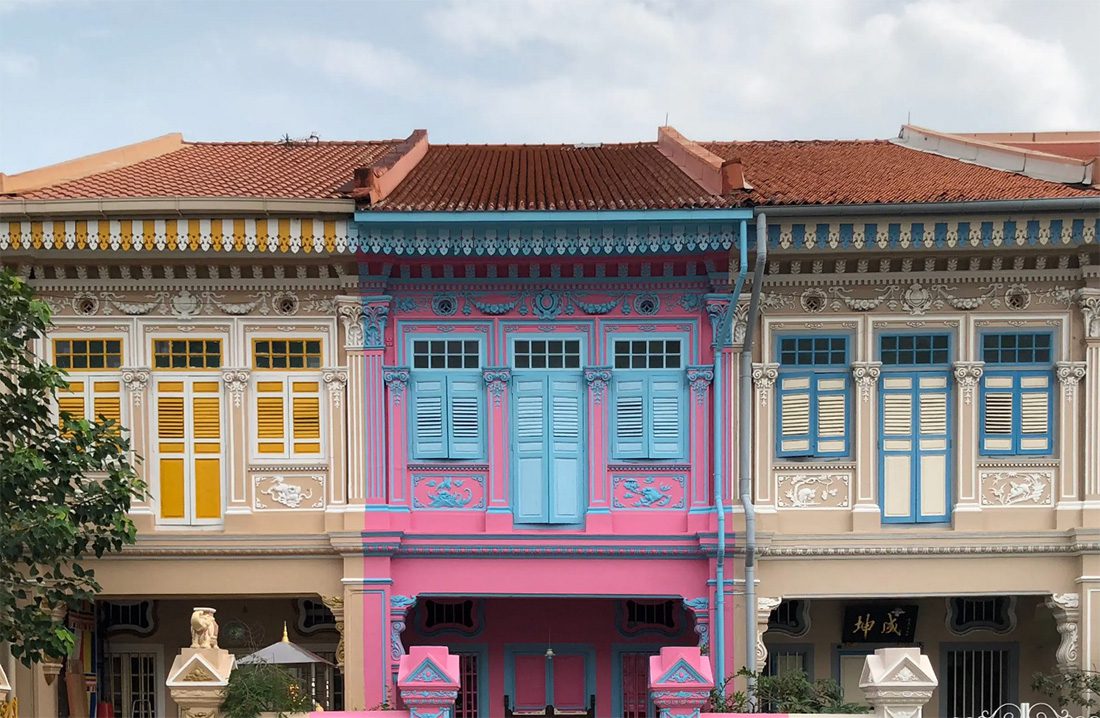
Peranakan Houses 📸 Andre Sheridan

Peranakan Houses 📸 Andre Sheridan
/ 4
These extravagant structures were not constructed without meaning, they were overly decorated with intention. Patterns and motifs were weaved into the design by the wealthy Peranakan merchants, sprinkling meaning into every inch – including deer motifs which symbolize wealth and longevity. Though narrow, the houses are extremely deep due to the timber supply that was available. The ornate overhangs, while aesthetically pleasing, also offered shopkeepers and home dwellers much-needed cover from the intense rainfall and sunlight of Singapore.
Over the course of the 20th century, the road fell out of popular favor. Modernization in the form of multiplex cinemas and malls moved into the area. Seeing their vibrant district falling apart, a group of determined locals pledged to restore the area.
Thanks to this group, art galleries, design studios, and boutiques moved in to revitalize the historic area, and the National Heritage Board would ultimately designate Joo Chiat Road as Singapore’s first Heritage Town. Today the mixed culture is commemorated in The Peranakan Museum which is located in the museum district. Opened in 2006 it highlights the accomplishments and history of the people. After years of renovations, it recently reopened to the public in February of 2023 with new exhibits showcasing the Peranakan lifestyle including fashion, jewelry, and a vibrantly painted wedding bed.
/ 3
Witnessing the growth in this community, you can sense an area reborn—with the narrow shophouses popping with color as if they had just been plastered with the pinks, blues, and bright reds that adorn them. And thanks to Singapore Tourism Board’s ‘SingapoRewards’ program, international travelers can now join tours of the shophouse district free of charge – just another initiative putting this popular place on the map.
While Singapore itself is a destination known for extravagance and vogue fashion, nods to the past, including the Peranakan Houses and museum, are beautiful reminders of the historical and cultural riches that exist just beyond the comforts of modernity. That’s some wealth and longevity you can get behind.


